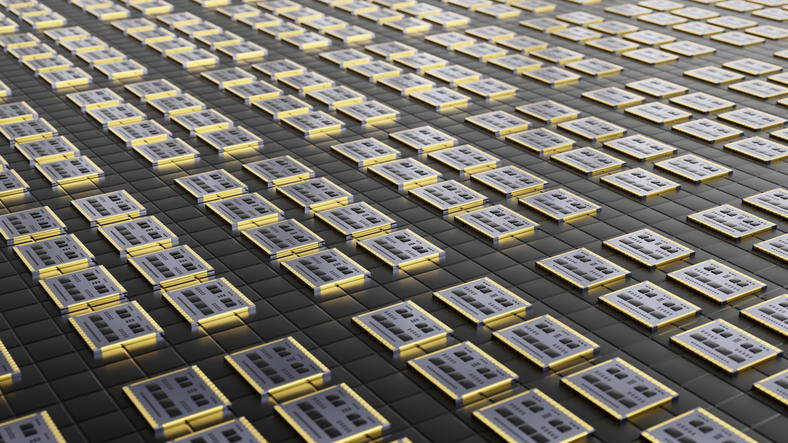Resistive Switches with Breakdown Elements
TECHNOLOGY NUMBER: 4655

OVERVIEW
Enhanced crossbar memory structure suppresses crosstalk in two-terminal resistive switching elements
- Greatly reduces crossbar memory crosstalk by intrinsic rectifying behavior
- Nonvolatile memory, high-density storage, and memory logic circuits
BACKGROUND
Crossbar structures maximize the density of two-terminal resistive switching elements and have the potential to surpass the limits of transistor scaling. Various materials have been explored for these switching elements, demonstrating promise for nonvolatile memory applications due to their scalability, switching speed, programming endurance, and data retention. However, most studies remain at the proof-of-concept stage, and successful integration of switching devices into practical crossbar forms is rare. A significant challenge in crossbar-based memory and logic circuits is crosstalk between the two-terminal devices, which can lead to incorrect readouts due to sneak current paths in the interconnected network. This issue is exacerbated when the resistive element behaves as a linear resistor in both forward and reverse biases. Current steering, often achieved through extrinsic diodes, attempts to mitigate this issue but introduces its own set of complexities, especially with bipolar switches, necessitating a novel solution for practical crossbar integration.
INNOVATION
We propose a novel switching structure that exhibits intrinsic rectifying behavior, which significantly suppresses current at small reverse biases and can be applied to any two-terminal switching device. This structure harnesses the inherent diode-like characteristics of the on-state switch, effectively eliminating sneak path currents without the need for extrinsic current steering elements. Unlike unipolar switches that rely on high-power Joule heating, our approach is compatible with low-power bipolar switches. This innovation ensures high device density and connectivity while mitigating the crosstalk issues that have hindered practical implementation of crossbar memories. Real-world applications include nonvolatile memory systems, high-density storage solutions, and advanced memory logic circuits.
ADDITIONAL INFORMATION
INTELLECTUAL PROPERTY:
US8351241 "Rectification element and method for resistive switching for non volatile memory device"